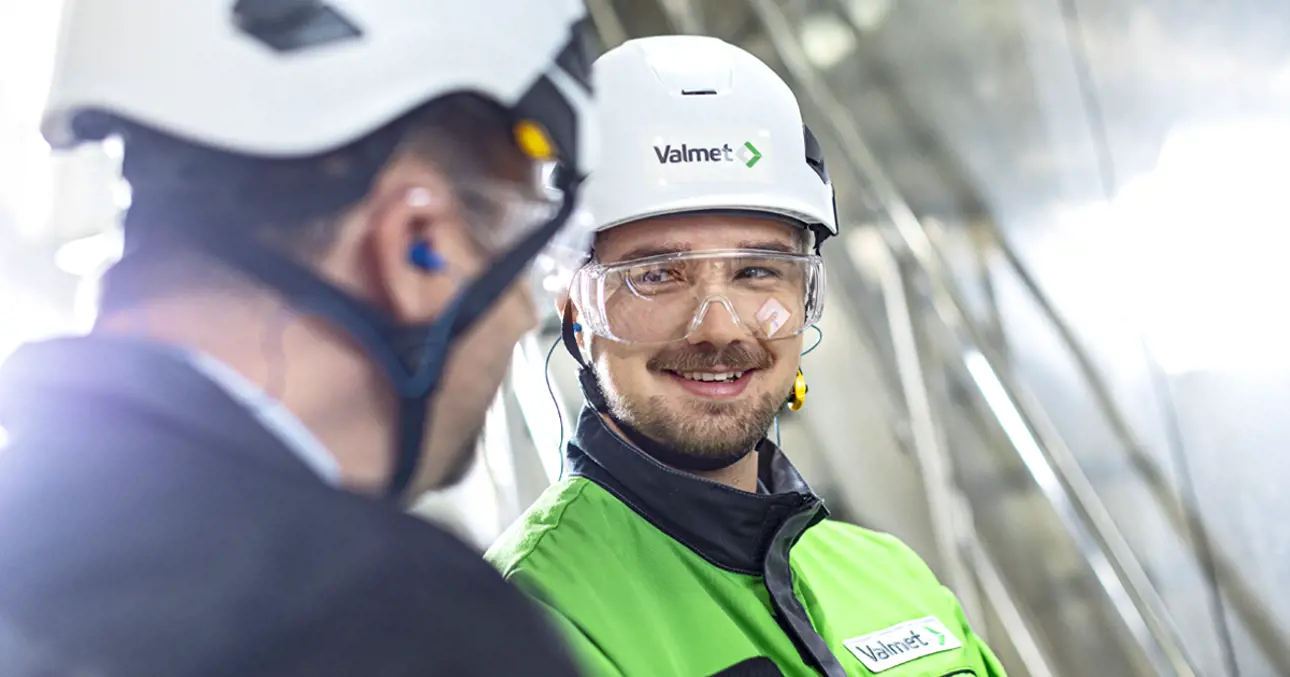Significant steps taken in reducing emissions in Valmet’s own operations
As part of its climate program Valmet is targeting for an 80% reduction* in CO2 emissions in its own operations by 2030. During the past two years, we have already taken significant steps especially in reducing CO2 emissions from fuels, heating, and electricity.

Valmet’s Climate Program includes ambitious CO₂ emission reduction targets and concrete actions for the whole value chain, including the supply chain, our own operations, and customers’ use of our technologies. It is estimated that the share Valmet’s own operations of the entire value chain impact accounts only for approximately 1 percent.
Victoria Larsson, VP, HSE at Valmet, reminds that even though that one percent might seem trivial, at Valmet it is considered very important.
“As a global company, we want to be among the forerunners in sustainability and take concrete steps ourselves to reduce emissions wherever we can and protect the environment for future generations. Many of the actions, such as switching to low carbon commuting, require strong personal commitment, and I’m very proud of the employees who have contributed to our joint targets by their individual sustainable choices,” says Larsson.
Biggest impact from fuels, heating, and electricity
Valmet’s main actions to reduce emissions include replacing fossil fuels with renewables, purchasing CO2 free electricity and district heating, implementing energy efficiency improvements in all locations, and promoting low carbon commuting and reducing business travel flights.
“We have already taken significant steps with CO2 emission reduction from fuels, heating, and electricity in our offices and production units around the world. Emissions from these areas have been reduced by 34% so far since the baseline year 2019, Larsson tells.
“For example, our Technology Center in Sundsvall, Sweden, switched from light fuel oil to biofuel in 2021. Also, some of our locations in Finland and Poland have already switched to low carbon district heating and the plan is to follow the same practice with other locations too,” she continues.
In electricity purchases, Valmet has reached a huge 40% reduction in CO2 emissions in 2022.
“43% of our Nordic electricity was purchased using Guarantees of Origin for biomass and nuclear energy. Low-carbon hydroelectricity is being used in our Canada locations and in Jiading, China, and several locations in the USA and Europe are using other renewable energy for their electricity, just to name a few examples,” Larsson says.
Listen to the podcast: Toward carbon-free energy
Many of Valmet’s locations have utilized the possibility to start producing CO2 free electricity themselves.
“We have already installed solar power stations to many of our locations in China, South America and Europe, and there are studies ongoing to further installations in several countries. In Araucária, Brazil, the solar power installations provide as much as 6% of the site’s annual consumption,” Kimmo Kohtamäki, Director, Group Real Estate at Valmet, highlights.
Energy audits lead to concrete energy efficiency improvements
Valmet operates at over 150 locations globally, meaning that even small energy efficiency improvements per site lead to significant savings altogether.
“Energy audits are an excellent way to assess the current energy efficiency of our offices and production sites and to plan concrete actions. In addition to larger energy efficiency investments through a dedicated investment frame, we have reached significant savings by simple actions such as switching to LED lights or adjusting the indoor temperatures at our locations”, Kohtamäki says.
“Another great example of our dedication is the special attention we have paid to compressed air consumption at our production units. At Hakkila, Finland, it was found out that the machines use a significant amount of compressed air even when not in use. Automatic solenoid valves were installed to control consumption, leading to energy savings as high as 150 MWh per year – just in one location,” Kohtamäki points out.
Special attention to business travel and commuting
CO2 emissions from business travel decreased dramatically during the Covid-19 pandemic but in 2022 bounced back to the pre-covid level. To tackle the challenge, Valmet’s Travel Policy was updated to reflect the climate program commitments in 2021.
When it comes to commuting, a global survey on commuting behaviors was conducted in 2022.
“Our colleagues show a growing interest in electrical vehicle charging, and as an outcome a global EVC guidance was published last year. Charging stations are being built wherever possible, and by now they are available in more than 15 locations, Kohtamäki says.
The work continues
To continue the good progress so far, Valmet will continue to invest in energy efficiency improvements. More locations are encouraged to do energy audits and compresses air leak surveys as a regular practice. There are already plans to increase solar power generation and speed up switching to low-carbon heating, electricity and fuels in numerous locations, and as the next step Valmet sees to implement those plans.
To increase the awareness of the environmental impact of Valmet’s operations among the company’s employees, a comprehensive e-learning material was published at the end of 2022. “We invite everyone working at Valmet to increase their awareness on these things as we believe every small step counts. Also, we appreciate the possibility to learn from each other, and that is why we actively share best practices and success stories within our company,” Larsson concludes.
* Baseline 2019
Related articles








